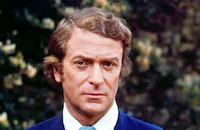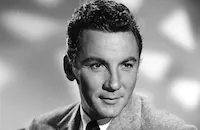The Swarm

Brief Synopsis
Cast & Crew
Irwin Allen
Michael Caine
Katharine Ross
Richard Widmark
Bill Snider
John Furlong
Film Details
Technical Specs
Synopsis
For years, killer bees from South America have been breeding with their benign cousins in the north and expanding their territory. When entomologist Brad Crane learns that the bees are coming together to form huge swarms, he tries to prevent the military from attacking and worsening the imbalance in nature. Crane and the military ultimately work together to keep the deadly swarm from reaching Houston.
Director
Irwin Allen
Cast

Michael Caine

Katharine Ross

Richard Widmark
Bill Snider
John Furlong
Phil Montgomery
George Simmons

Lee Grant

Ben Johnson
Ernie Orsatti

Cameron Mitchell

Slim Pickens
Art Balinger
Jerry Toomey
Arthur Space
Frank Blair
Doria Cook-nelson
Trent Dolan
Bradford Dillman
Marcia Nicholson
Chuck Hayward
Joey Eisnach
Christian Juttner

Henry Fonda
Steven Marlo

John Williams
Alejandro Rey

Jose Ferrer
Patrick Culliton
Stephen Powers
Chris Capen

Patty Duke
Michael Sheehan
James Austin Turley
Howard Culver
Arell Blanton
Morgan Paull
Tony Haig

Donald Barry

Olivia De Havilland

Richard Chamberlain
Mara Cook
Robert Varney
Chris Petersen

Fred Macmurray
Glenn Charles Lewis
Crew
L. B. Abbott
Herb Adelman
Irwin Allen
Norman A Cook
Tom Cranham
Les Fresholtz
Harold Fuhrman
Al Gail
Jerry Goldsmith
Ken Harris
Arthur Herzog
Fred Hesper
Stan Jolley
Alfred M Kemper
Fred J. Koenekamp
Harold F. Kress
Hal Landaker
Herman Lewis
Tony Lloyd
Sidney Marshall
Michael Minkler
Arthur Morton
Arthur Piantadosi
Allan R Potter
Sheridan Dar Reid
Stuart A. Reiss
Michael N Salamunovich
Stirling Silliphant
Paul Stader
Skip Surguine
George E. Swink
Paul Zastupnevich
Paul Zastupnevich
Film Details
Technical Specs
Award Nominations
Best Costume Design
Articles
The Swarm
Based on a novel by Arthur Herzog, The Swarm seemed to be a highly topical project in the mid-'70s with hysteria over the supposed armies of killer Africanized bees mounting among both the press and public. Furthermore, killer bee movies had been a proven draw on the drive-in circuit with The Killer Bees (1966) and TV screens were inundated by small-screen features like Killer Bees (1974) and The Savage Bees (1976). However, the sensationalism soon waned and Fox and Allen parted ways, leaving The Swarm a free agent along with four other projects: The Day the World Ended (which would later turn into 1980's When Time Ran Out...), the never-produced Circus and The Water Syndrome, and the long-delayed Poseidon Adventure II, which would become Allen's final directorial effort as 1979's Beyond the Poseidon Adventure.
Warner Bros. quickly stepped in to finance The Swarm, which came stacked with a roster of talent including a laundry list of Oscar winners like Olivia de Havilland, Ben Johnson, Lee Grant, José Ferrer, and Patty Duke. However, one of the first people to be signed was leading man Michael Caine, who had recently anchored such films as The Man Who Would Be King (1975) and The Eagle Has Landed (1976). Cast opposite him as the primary crusader against the encroaching, buzzing menace was Katharine Ross, who was experiencing a far more erratic career in the '70s after her two seismic hits near the end of the prior decade, The Graduate (1967) and Butch Cassidy and the Sundance Kid (1969). However, she had just proven her ability to stand out in a stellar ensemble cast in the grim drama Voyage of the Damned (1976), and her strong turn in The Stepford Wives (1975) proved she could handle horrific material with aplomb. However, it was de Havilland who proved to be the most fascinating casting as she returned to the Warner Bros. lot for the first time in 34 years after her much-publicized lawsuit against the studio that remains one of the most famous in Hollywood history.
It's the de Havilland subplot in this film that confused many audience members as the film devoted a significant amount of time to her romantic triangle with Johnson and Fred MacMurray (in his final role). In fact, the film is stuffed with characters and subplots throughout to represent the various military and civilian regions of Texas affected by the attacking bees, whose survivors have surreal hallucinations unlike anything else in cinema.
Confident in the commercial prospects of its cast and central gimmick, Warner Bros. rolled out The Swarm on 1100 screens across America the middle of July, 1978, sandwiched between the releases of Grease and National Lampoon's Animal House. Unfortunately the film was immediately besieged by negative audience reactions and extremely harsh critical reviews, vanishing from theaters within two weeks.
One aspect of the film unscathed by the response was the music score by Jerry Goldsmith, who had just won an Oscar for scoring The Omen (1976) and was in the midst of an incredibly productive year that also saw his name on Magic, The Boys from Brazil, Coma, The Great Train Robbery, Damien: Omen II, and Capricorn One. His work here is laced with his trademark experimentation and sly in-jokes, such as utilizing French horns to create a buzzing sensation on the soundtrack. However, it was the film's costume designs by Allen regular Paul Zastupnevich that earned the film its sole (and quite unexpected) Academy Award nomination.
The theatrical version of The Swarm ran a reasonable 116 minutes, but that version has now become nearly impossible to see. The film's 1980 broadcast TV debut from NBC featured numerous scenes and extended bits of footage added to the running time (a very common practice at the time with big-budget titles like King Kong, Superman, and Bloodline, to name a few); when the film was released on laserdisc and then DVD, it was the longest possible version with a mammoth length of 155 minutes. Fans of this wildly ambitious and bafflingly executed film have since embraced this edition, relishing every minute of its ripe melodrama and bee-battling action to the fullest.
By Nathaniel Thompson

The Swarm
Quotes
Trivia
"Managing the bees" was a huge challenge on this film. They went through several bee keepers before finding one that figured out they could actually hire unemployed people to "clip" the stingers off of the bees in a refrigerated trailer (bees can't fly much at near freezing temperatures). This operation, which went on all summer, made the bees "safe" for use around the cast and crew (alas, a few stingers were missed). But, as it turned out, the bees still contained some venom even without their stingers and the stuff got into the air on stage and produced some allergic reactions. In addition (there were thousands of bees in use), everyone had little yellow dots on their clothing - bee poop, probably.
'Michael Caine' stated in an interview that during filming he thought the little yellow spots left by the bees on his clothing was honey so he began to eat it, unaware he was eating bee poop.
When Felix is bringing flowers to Maureen, he passes by a movie theatre which is playing Towering Inferno, The (1974), which was also produced by 'Irwin Allen' .
Miscellaneous Notes
Released in United States 1978
Released in United States 1978















